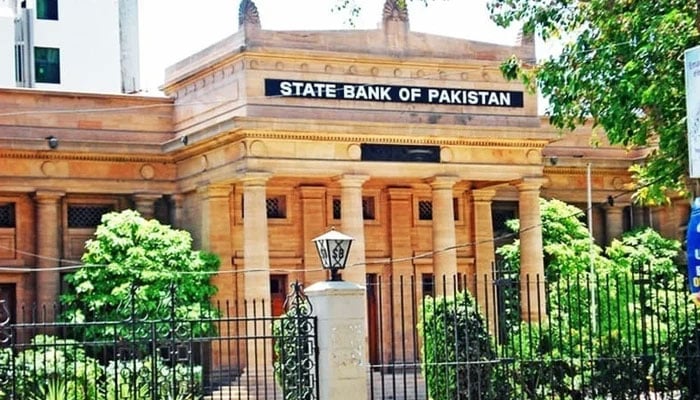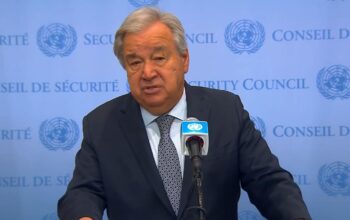By Staff Reporter
KARACHI: Pakistan’s central bank cut its key policy rate by 100 basis points to 11 percent on Monday, resuming an easing cycle that has reduced the rate from a record 22% after a March pause, as inflation plummeted to near-zero levels amid collapsing food and energy prices.
“The Committee noted that inflation declined sharply during March and April, mainly due to a reduction in administered electricity prices and continued downtrend in food inflation,” the Stata Bank of Pakistan (SPB) said in a statement. “Overall, the MPC assessed that the inflation outlook has improved further relative to the previous assessment.”
The central bank expects inflation to gradually rise in the coming months but stabilize within the 5-7% target range. It cautioned, however, that this outlook faces risks from volatility in wheat and other food prices, the timing and magnitude of energy price adjustments, potential global supply-chain disruptions, and uncertain commodity price trends.
The cut, which surpassed market expectations of a 50-basis-point reduction, extends a series of cuts totaling 1,000 basis points since June 2024. The bank had paused in March, citing risks from potential price pressures, including U.S. tariff hikes.
“The cut is higher than market expectations,” said Mohammad Sohail, analyst at brokerage Topline Securities in Karachi.
The decision coincides with heightened tensions with India following a deadly attack on tourists in occupied Kashmir. Both nations have imposed economic measures, including trade curbs
The move also precedes an imminent IMF decision on releasing a $1 billion tranche from the country’s $7 billion bailout.
The SBP also warned that Pakistan’s fragile economic recovery is at risk from escalating global trade wars, geopolitical developments, fiscal slippages, and a “sharply downgraded” International Monetary Fund (IMF) growth outlook for advanced and emerging economies. “In this backdrop, the MPC emphasized the importance of maintaining a measured monetary policy stance,” the bank said.
Real Sector
Real GDP growth was provisionally reported at 1.7% in Q2-FY25, bringing cumulative growth in H1-FY25 to 1.5%, in line with MPC expectations. The committee noted that high-frequency indicators, such as rising sales of passenger vehicles and petroleum products (excluding furnace oil), increased electricity generation, and improving business and consumer confidence, suggest sustained economic momentum. However, large-scale manufacturing (LSM) output remains below expectations, driven by significant contractions in low-weight segments and construction-allied sectors, which offset growth in garments, textiles, pharmaceuticals, and automobiles. In agriculture, wheat output exceeded targets but was lower than the previous year. The MPC maintained its FY25 growth projection of 2.5-3.5% and anticipates faster growth in FY26, though it highlighted risks from global uncertainty and unfavorable weather for the upcoming Kharif season.
External Sector
A substantial current account surplus in March 2025, driven by record-high workers’ remittances, brought the cumulative surplus to $1.9 billion for July-March FY25. The MPC noted that a lower import bill, mainly due to reduced global oil prices, and rising high-value-added textile exports also contributed to the March surplus. However, the trade deficit widened to $3.4 billion in April, according to Pakistan Bureau of Statistics data. Supported by robust remittances, the MPC expects the current account to remain in surplus for FY25. Net financial inflows have been weak due to large debt repayments and delays in official inflows, but the MPC projects SBP’s foreign exchange reserves to reach $14 billion by June 2025, with further increases in FY26 based on a moderate current account deficit and improved financial inflows. The committee cautioned that global economic and trade uncertainties pose risks to this outlook.
Fiscal Sector
Federal Board of Revenue (FBR) tax revenue grew 26.3% year-on-year in July-April FY25 but fell short of targets. The MPC noted that higher Petroleum Development Levy (PDL) rates are expected to boost non-tax revenues in the remaining months of FY25. Government expenditure remained relatively contained in July-March FY25, but the committee reaffirmed that while the fiscal deficit may align with the FY25 target, achieving the targeted primary surplus remains challenging. The MPC emphasized the need for reforms to ensure fiscal sustainability, particularly by expanding the tax net and reforming state-owned enterprises. It welcomed recent provincial legislation to increase agriculture income tax collection and stressed the importance of effective implementation.
Money and Credit
Broad money (M2) growth accelerated to 13.3% year-on-year as of April 18, up from 11% at the previous MPC meeting, driven by net domestic assets (NDA) and net foreign assets (NFA). The rise in NDA growth was due to a 12.6% year-on-year increase in private sector credit, reflecting easing financial conditions and improving economic activity. Firms in textiles, refineries, and chemicals and fertilizers increased borrowing for working capital in July-March FY25 compared to the same period last year, while auto financing and personal loans also grew. Currency in circulation saw an Eid-related spike in March, partially reversing by April, leading to reserve money growth of 13.1%.
Inflation Details
Headline inflation’s decline to 0.3% in April was driven by sharp falls in wheat and allied product prices, moderating global commodity prices, and downward adjustments in electricity tariffs, which also eased consumer inflation expectations. Core inflation, previously sticky at around 9%, fell to 8.0% year-on-year in April. The MPC noted that inflation’s downward trend faces both upside risks—such as wheat and food price volatility, energy price adjustments, supply-chain disruptions, and commodity price uncertainty—and downside risks
Copyright © 2021 Independent Pakistan | All rights reserved




